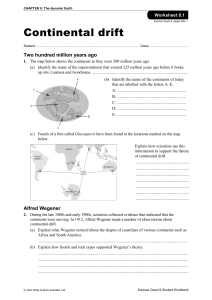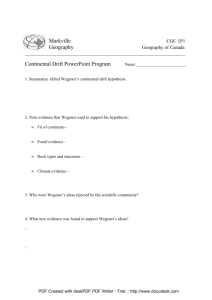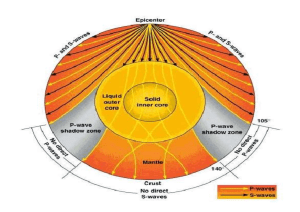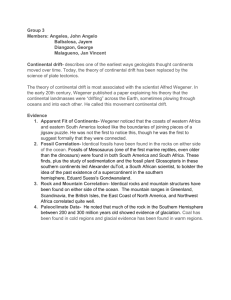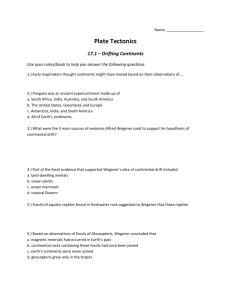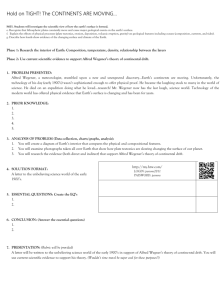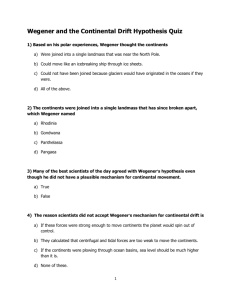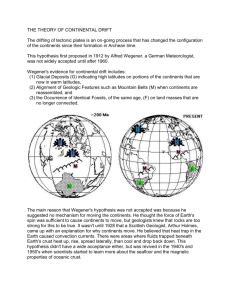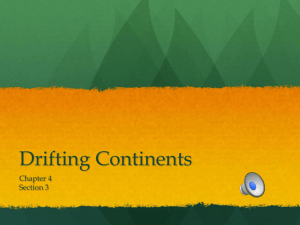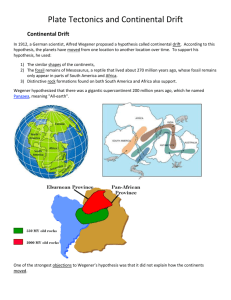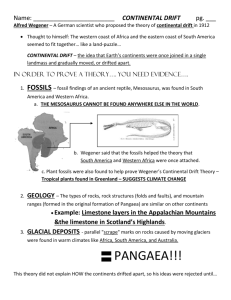Continental Drift Notes answer key
advertisement
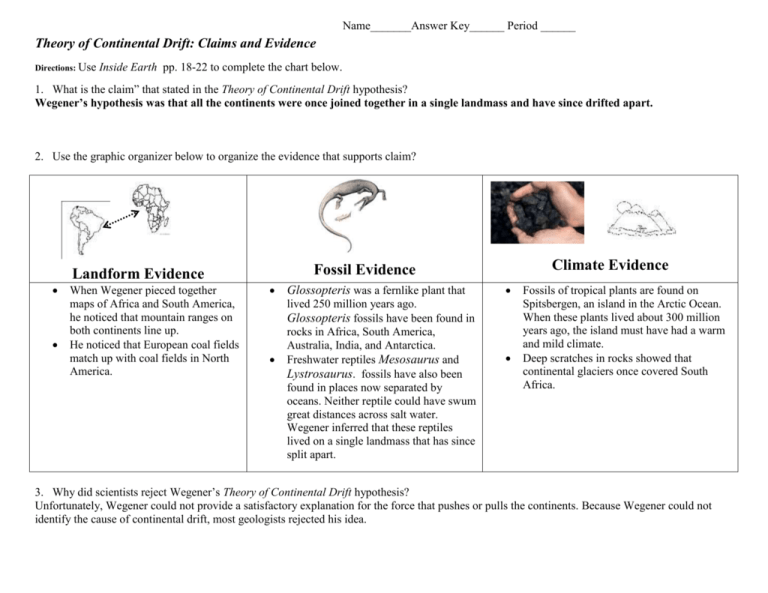
Name_______Answer Key______ Period ______ Theory of Continental Drift: Claims and Evidence Directions: Use Inside Earth pp. 18-22 to complete the chart below. 1. What is the claim” that stated in the Theory of Continental Drift hypothesis? Wegener’s hypothesis was that all the continents were once joined together in a single landmass and have since drifted apart. 2. Use the graphic organizer below to organize the evidence that supports claim? When Wegener pieced together maps of Africa and South America, he noticed that mountain ranges on both continents line up. He noticed that European coal fields match up with coal fields in North America. Climate Evidence Fossil Evidence Landform Evidence Glossopteris was a fernlike plant that lived 250 million years ago. Glossopteris fossils have been found in rocks in Africa, South America, Australia, India, and Antarctica. Freshwater reptiles Mesosaurus and Lystrosaurus. fossils have also been found in places now separated by oceans. Neither reptile could have swum great distances across salt water. Wegener inferred that these reptiles lived on a single landmass that has since split apart. Fossils of tropical plants are found on Spitsbergen, an island in the Arctic Ocean. When these plants lived about 300 million years ago, the island must have had a warm and mild climate. Deep scratches in rocks showed that continental glaciers once covered South Africa. 3. Why did scientists reject Wegener’s Theory of Continental Drift hypothesis? Unfortunately, Wegener could not provide a satisfactory explanation for the force that pushes or pulls the continents. Because Wegener could not identify the cause of continental drift, most geologists rejected his idea.
